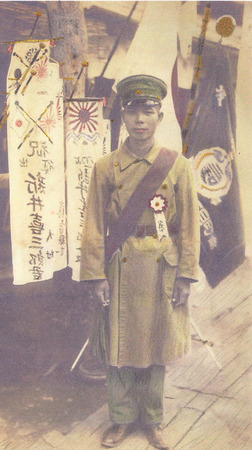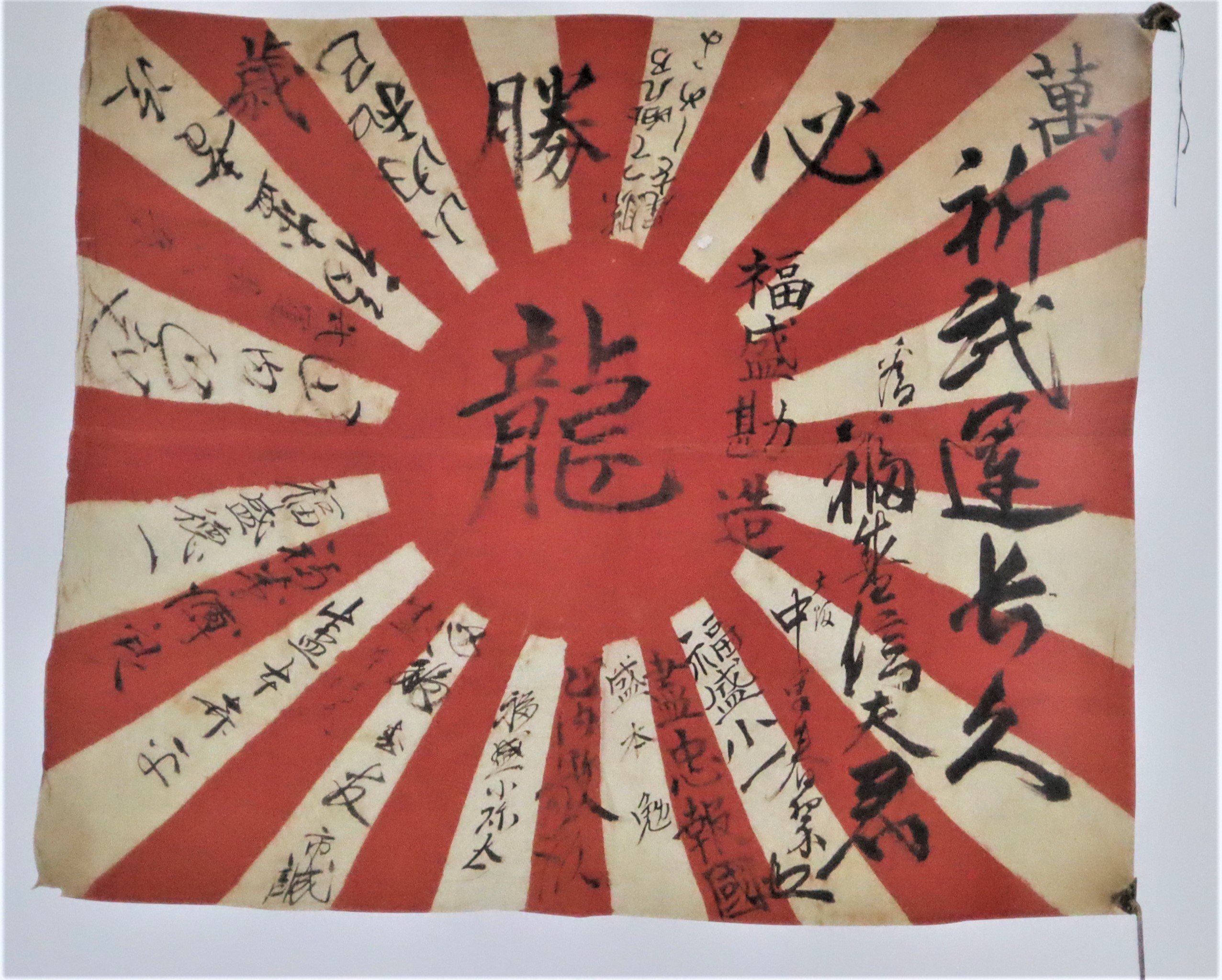World War Two era off-to-war banners, also known as shussei nobori in Japanese, are quite colorful and come in various sizes. Most are long and narrow; however, less common are those that take a rectangular, flag shape. Small nobori (perhaps as short as 14 or 16 inches), were generally carried by hand on short bamboo poles, while medium sized ones (perhaps 4, 5, or 6 feet long), were displayed on stouter, longer bamboo poles. Very large banners, sometimes 20 feet or even longer might be hung singly or in multi-banner groups outside the volunteer or inductees home.

These made for a most impressive display and signified to everyone that a particular man was being celebrated for his induction into the military. Kanji characters on the nobori normally gave the name of the man going into the military, as well as the name of the person or organization sponsoring the banner. The artwork on each shussei nobori was generally chosen by the person purchasing the banner from a banner or flag store. Once selected, the name characters were painted onto the material by the shop owner.

